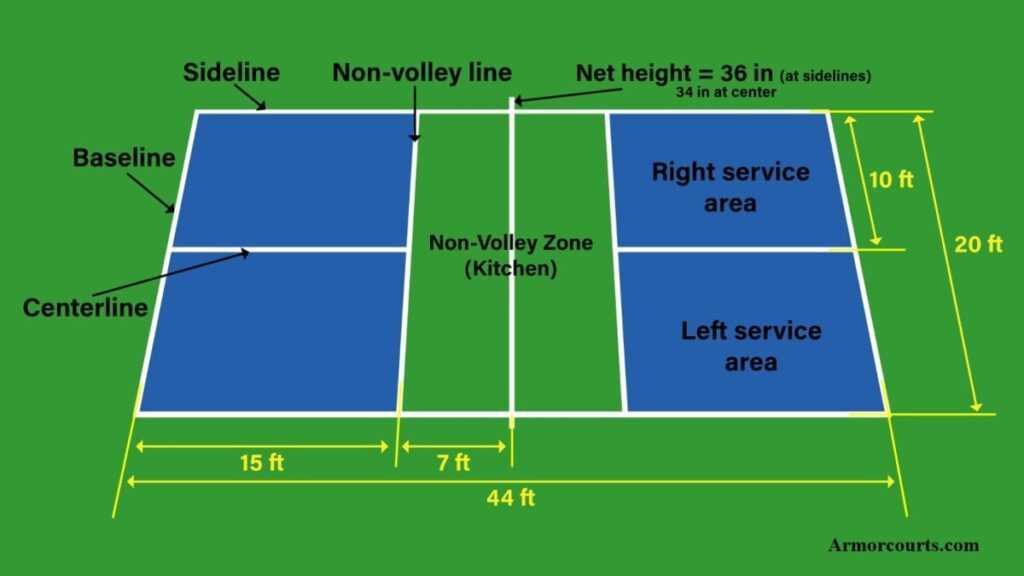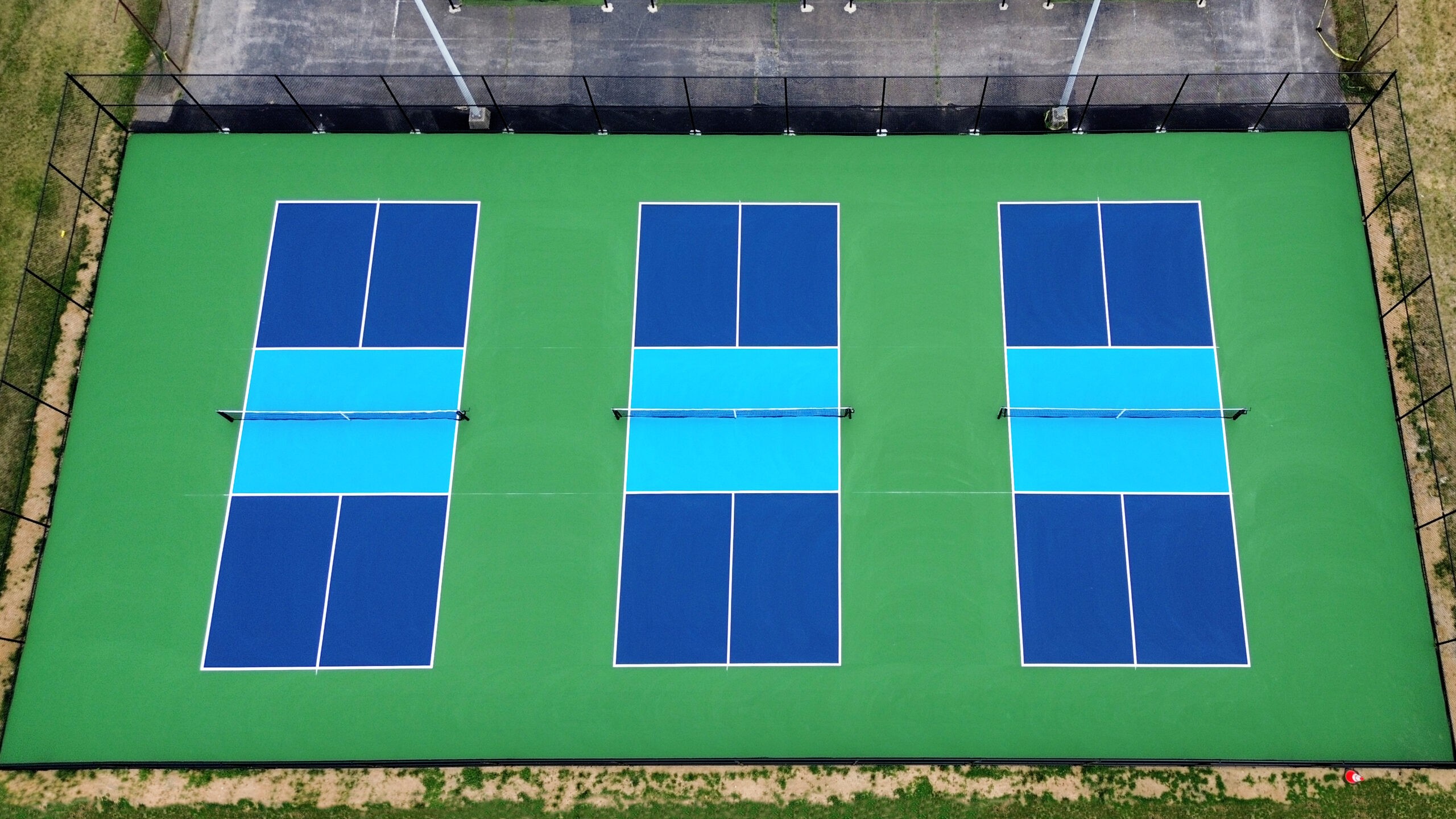Pickleball Court Construction-- Vital Tips for a Resilient Court
Pickleball Court Construction-- Vital Tips for a Resilient Court
Blog Article
Sustainable Practices in Pickleball Court Building You Ought To Know
As the popularity of pickleball remains to climb, so also does the requirement for sustainable practices in court construction. This approach not just addresses ecological worries however also boosts the long life and performance of the courts. From selecting environment-friendly materials to implementing reliable drainage and energy-saving lights options, there are various approaches to take into consideration. The impact of these techniques extends far beyond the court itself. Recognizing exactly how each component contributes to an extra sustainable future invites further exploration into the intricate equilibrium in between recreational development and ecological stewardship.
Picking Eco-Friendly Products
Selecting eco-friendly materials is a critical action in the construction of lasting pickleball courts. The option of sustainable products not only reduces ecological effect yet additionally enhances the longevity and performance of the court. Key materials consist of recycled rubber for the surface, which supplies excellent toughness and shock absorption while drawing away waste from landfills.
Additionally, using in your area sourced products minimizes transport discharges and sustains local economic situations. Pickleball court construction. Utilizing native hardwoods for fencing and seating can provide a lasting visual while making certain strength against the elements.
Including absorptive products for court foundations can further contribute to sustainability by permitting all-natural water drainage and reducing drainage. These options not only shield regional communities but additionally promote much healthier play atmospheres.
Efficient Water Drainage Solutions
While the selection of eco-friendly products is crucial, applying efficient drain solutions is similarly vital for keeping sustainable pickleball courts. Correct drainage not only secures the court surface from water damage yet likewise lessens erosion and overflow, advertising ecological stability.
Efficient drainage systems can include absorptive paving, which allows water to infiltrate the ground instead of merging on the surface. This decreases the probability of standing water, which can bring about mold and mildew and various other upkeep concerns. Additionally, incorporating tactically put water drainage networks and swales can guide excess water away from the court location, making certain a completely dry having fun surface area and protecting against dirt disintegration.
Making use of native vegetation in the landscape design around the courts can further enhance water drainage by taking in excess water and decreasing runoff. These plants call for less irrigation and advertise biodiversity, lining up with lasting methods.
Additionally, it is essential to routinely preserve the water drainage system to ensure its long-term effectiveness. This consists of clearing up debris and surveillance for blockages. By focusing on reliable drainage options, pickleball court builders can substantially add to the sustainability and durability of the center, inevitably benefiting both players and the environment.
Energy-Efficient Lights Options
As the demand for pickleball remains to grow, integrating energy-efficient lights alternatives right into court design has come to be significantly important for sustainability. Conventional illumination systems frequently eat excessive energy, contributing to higher operational costs and environmental effect. Adopting modern, energy-efficient modern technologies is essential for both brand-new building and constructions and restorations.
LED (Light Emitting Diode) illumination stands apart as a the original source leading choice as a result of its long life and energy savings (Pickleball court construction). Contrasted to traditional Bonuses lighting, LEDs make use of about 75% less energy and can last as much as 25 times longer, dramatically minimizing maintenance prices. The directional nature of LED illumination decreases light pollution, ensuring that lighting is concentrated on the court rather than surrounding locations.

Lasting Surface Alternatives
Discovering sustainable surface area alternatives for pickleball courts has actually obtained traction among home builders and gamers alike. The emphasis on environmentally friendly products not only lines up with the expanding ecological recognition yet also improves the efficiency and durability of the courts.
One prominent choice is the use of recycled rubber, which can be sourced from used tires. This material supplies excellent shock absorption, minimizing the threat of injuries for gamers while promoting sustainability. Furthermore, modular tiles made from recycled plastics use one more practical option. These tiles are easy to mount and replace, and their convenience enables different court setups.
All-natural grass courts are likewise becoming a lasting choice, advertising biodiversity and reducing the warm island result. They require routine upkeep and water, which might not align with all sustainability goals.

Water Preservation Methods

One more effective strategy involves the installment of rainwater harvesting systems. These systems collect and save rainwater for usage in maintaining court surface areas and landscaping. This strategy not only preserves drinkable water yet likewise lowers reliance on metropolitan sources.
In addition, utilizing drought-resistant landscape design around the courts is essential. Native plants need much less water and are much better adjusted to local climate conditions, thus reducing total water consumption. Additionally, using reliable watering systems, such as drip watering, guarantees that water is provided directly to plant roots, decreasing dissipation and waste.
Verdict
Incorporating sustainable practices in pickleball court building dramatically adds to ecological conservation and resource effectiveness. Using environment-friendly products, carrying out efficient drainage solutions, and adopting energy-efficient lights alternatives can considerably minimize environmental impact. Furthermore, discovering lasting surface choices and utilizing water conservation strategies boost the general sustainability of these recreational centers - Pickleball court construction. By prioritizing these techniques, the building and construction of pickleball courts can line up with more comprehensive environmental objectives while promoting longevity and performance within areas.
As the popularity of pickleball continues to increase, so also does the need for sustainable methods in court building and construction.Picking eco-friendly materials is a critical step in the construction of sustainable pickleball courts. By prioritizing energy-efficient illumination choices, pickleball court producers can add to an extra lasting future while fulfilling the demands of stakeholders and gamers alike.Including lasting surface area choices not just boosts the efficiency of pickleball courts however likewise paves the way for executing efficient water conservation strategies.Integrating sustainable practices in pickleball court building and construction dramatically adds to environmental conservation and resource efficiency.
Report this page